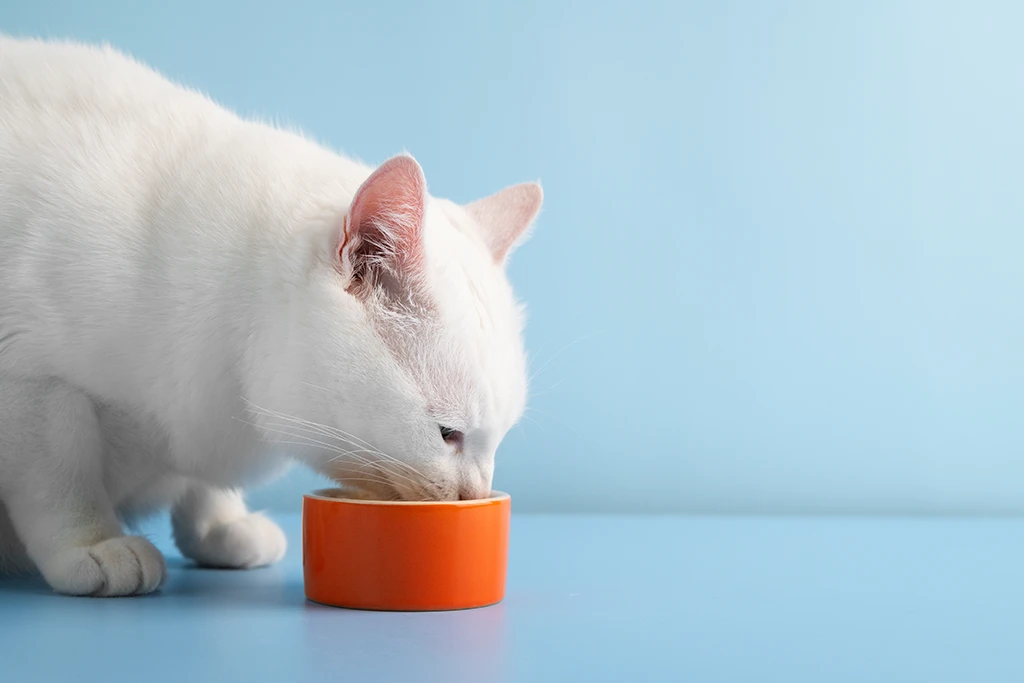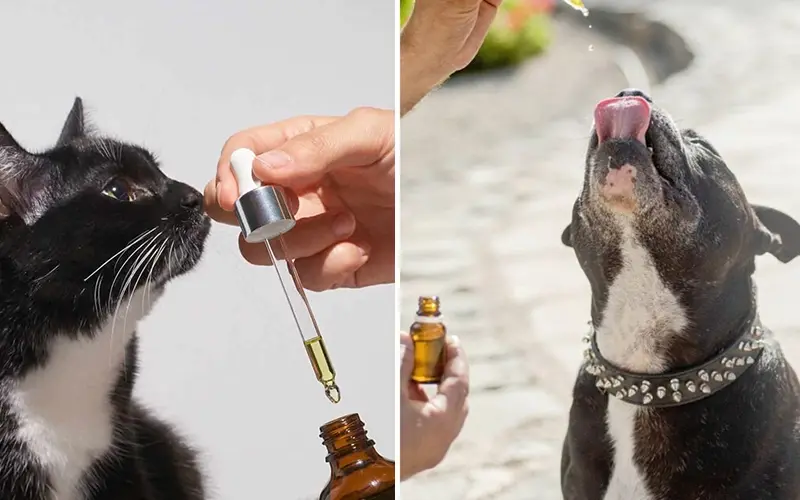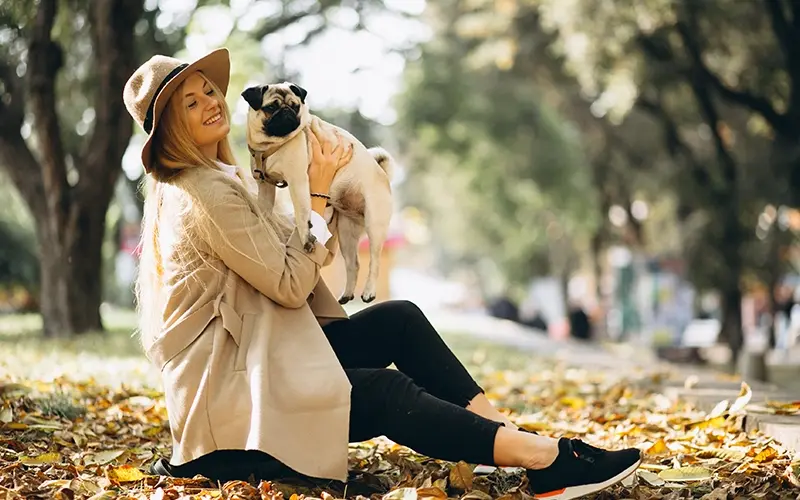

CBD’s popularity in the pet world is skyrocketing. Pet parents are increasingly turning to this natural compound for various health benefits. Hence comes the question: How much CBD should be given to a pet? Owners considering administering CBD to their pets must know the answer to this question.
Don’t worry, one doesn’t need to have a degree in veterinary science to give CBD to their pets. We are here to help. Our vet-approved guide is intended to help paw-rents with CBD dosage-related queries.
Table of Contents
ToggleDifferent CBD dosages have varying impacts on a pet’s health. While CBD offers potential benefits such as pain relief, anxiety reduction, and seizure management, improper dosing leads to adverse effects or diminished efficacy. Striking the right balance ensures a pet receives the maximum benefits without any unwanted surprises.
Determining the ideal CBD dosage for a pet requires a personalized approach. Several key factors influence the optimal amount:

While CBD’s potential benefits extend to both cats and dogs, their dosage requirements differ. Just like their personalities, their bodies process CBD in their own unique ways. Let’s break down some general dosage guidelines to get started on the right paw:
Doe delines, aim between a low dose of 0.2 mg/lb and a high dose of 0.6 mg/lb, once daily. For twice-a-day dosing daily, divide the dose into two.
Keep a close eye on the cat’s behavior and adjust the dosage accordingly. If they seem overly sleepy or experience any digestive upset, it is a sign to reduce the dose.
“Cats show far lower oral absorption kinetics or rapid elimination of CBD-rich hemp nutraceuticals compared to dogs,” according to the 2019 study by Deabold, K., Schwark, W., Wolf, L., & Wakshlag, J., titled “Single-Dose Pharmacokinetics and Preliminary Safety Assessment with Use of CBD-Rich Hemp Nutraceutical in Healthy Dogs and Cats.”
Related Articles: CBD Dosage For Cats: Full Guide
For our canine companions, the minimum dose is 0.05 mg/lb and the maximum dose is 2.3 mg/lb when introducing the product. On average, a good starting point is about 0.20 mg of CBD per pound of body weight, given once a day.
So, if a pup weighs 20 pounds, you’d start with 4 mg of CBD per dose. If you don’t see the desired effects after a few weeks, gradually increase the dosage, always checking in with the dog’s attending veterinarian along the way.
Some studies show that higher doses are safe for dogs. “A once-daily oral dose of 4 mg CBD/kg BW is well-tolerated in clinically healthy dogs for a duration of 6-months, with no adverse effects on health and wellbeing,” according to the 2022 study by Bradley, S., Young, S., Bakke, A., Holcombe, L., Waller, D., Hunt, A., Pinfold, K., Watson, P., & Logan, D., titled “Long-term daily feeding of cannabidiol is well-tolerated by healthy dogs.”
Related Articles: CBD Dosage For Dogs: Full Guide
Remember: These are just general starting points! The pet’s attending veterinarian is the best resource for personalized dosage recommendations. They’ll consider the pet’s individual needs, any underlying health conditions, and the specific reasons for using CBD.
Just like finding the perfect treat or toy, discovering the right CBD dosage for a pet takes a little bit of trial and error. Start low, observe a pet’s response, and adjust gradually with the vet’s guidance. With a little patience and attention, paw-rents find the sweet spot that unlocks the full potential of CBD for a furry companion.
Getting a furry friend to take their CBD doesn’t have to be a wrestling match.There are various forms of CBD products to choose from. Some are as easy as pie – or, in this case, as tasty as a CBD-infused treat! Let’s explore some simple ways to make CBD administration a breeze:
For those who prefer a no-nonsense approach, administering CBD oil directly into a pet’s mouth with a dropper is an option. Aim on the side of their cheek to avoid any spills or struggles as the liquid is dropped on the gums for transmucosal administration. A little patience and positive reinforcement make this a quick and easy process.
One popular method is to mix CBD oil or tincture directly into a pet’s food. Just a few drops go a long way in transforming their meal into a wellness boost. If a pet’s a bit picky, try adding it to their favorite wet food or a special treat.
If a pet is all about the snacks, pre-made CBD treats are a fantastic option. They combine the benefits of CBD with the deliciousness of a reward, making administration a fun and enjoyable experience for both paw-rents and pets.
The frequency of CBD administration depends on the specific condition being addressed. For chronic conditions like arthritis or anxiety, daily dosing is typically recommended to maintain consistent levels of CBD in the pet’s system. For acute issues like travel anxiety or noise phobias, CBD is given as needed, about 30 minutes to an hour before the anticipated stressor.
Remember, every pet is different, and their response to CBD varies. It’s essential to start with a low dose and gradually increase it, always observing a pet’s behavior and consulting the pet’s veterinarian for personalized guidance. With a little creativity and patience, paw-rents seamlessly incorporate CBD into their pet’s routine, helping them feel their best, naturally.

Once paw-rents have started their pet on CBD, it’s crucial to monitor their response closely. Look for any positive changes, such as improved mobility, reduced anxiety, or better sleep. Also, be mindful of any potential side effects like lethargy or changes in appetite.
Gradual adjustments to the dosage are necessary based on the pet’s individual reaction. If any concerning symptoms or no improvement in the pet’s condition are noticed, consult the pet’s veterinarian promptly.
Even with the best intentions, it’s easy to make a few missteps when starting a pet on CBD. But don’t worry, we’re here to help paw-rents sidestep those common pitfalls and ensure a smooth journey for a furry friend.
It’s natural to want to see results fast, but starting with a high dose right off the bat is a no-no. Think of it like introducing a new food to a pet – start small and gradually increase the amount as needed. This allows their body to adjust and minimizes the risk of any unwanted side effects.
CBD affects every pet differently. That’s why it’s crucial to pay close attention to a pet’s behavior and overall well-being after administering CBD. Look for any changes in appetite, energy levels, or bathroom habits. These subtle clues help paw-rents determine if the dosage is just right or needs a little tweaking.
Consistency is key when it comes to CBD. Just like a human’s daily cup of coffee, maintaining a regular schedule for administering CBD is important for optimal results. Skipping doses or changing the timing disrupt its effectiveness.
Not all CBD products are created equal. Unfortunately, the market is flooded with low-quality options that do not deliver the promised benefits or, worse, contain harmful contaminants. Always choose reputable brands that offer third-party lab testing and transparent sourcing practices.
“Low-THC veterinary hemp supplements have variable CBD concentrations and may contain heavy metals, highlighting the need for proper labeling and dosing instructions before use,” according to the 2020 study by Wakshlag, J., Cital, S., Eaton, S., Prussin, R., & Hudalla, C., titled “Cannabinoid, Terpene, and Heavy Metal Analysis of 29 Over-the-Counter Commercial Veterinary Hemp Supplements.”
By avoiding these common mistakes, paw-rents set up their pet for a successful CBD experience. Remember, a little patience and attention go a long way in ensuring pets reap the full rewards of this natural supplement.
When it comes to CBD for pets, quality is paramount. Select products that have been third-party lab tested to verify their purity and potency. Look for products specifically formulated for pets, and choose reputable brands with transparent labeling.
Consider the type of CBD product that best suits a pet’s needs and preferences. Full-spectrum CBD contains all the naturally occurring compounds found in the hemp plant such as terpenes and other cannabinoids including 0.3% (or less) tetrahydrocannabinol (THC), while broad-spectrum CBD contains most of the same compounds without THC. CBD isolate contains only pure CBD.
The pet’s attending veterinarian is the most trusted partner in a pet’s healthcare journey. Veterinarians guide owners to choose the right CBD product, determine the appropriate dosage, and monitor a pet’s progress.
However, not all veterinarians welcome the idea of using CBD on pets as research is still ongoing. In this case, consult holistic veterinarians for proper clinical assessment of the pet’s needs. Open discussions with them provide answers to questions, address any concerns, and ensure the pet’s CBD journey is a safe and successful one.
Don’t hesitate to ask the vet questions like:
Finding the right CBD dosage for a pet is a journey of discovery leading to significant improvements in their overall well-being. Remember to start low, go slow, and monitor the pet closely. And most importantly, always consult the pet’s veterinarian for personalized guidance.
References

Table of Contents
Toggle